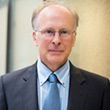Labor Market Slack and the Insured Unemployment Rate

This post is the second of a two-part series exploring slack in the labor market. The first post, “How Tight Is the Labor Market?” appeared Monday, Nov. 2.
In yesterday’s post, we saw how the increase in the long-term unemployed may be masking how tight the labor market is. In today’s post, we’ll see what another measurement of unemployment says about labor market slack.
A nonstandard measure of unemployment is the insured unemployment rate, which is the number of people currently receiving unemployment insurance (UI) as a percentage of the labor force. This is a useful measure, as there is an observed action (filing for UI) associated with being among the insured unemployed. The conventionally unemployed, on the other hand, are those who report that they are not employed but searching for work, an action which cannot be verified. Insured unemployment also leaves out the long-term unemployed, who are no longer eligible for UI. It is perhaps problematic that insured unemployment also omits those who move from not-in-the-labor-force (NILF) to unemployed (as these people cannot receive UI), but most transitions out of NILF are to employment rather than unemployment.
If we plot the Beveridge curve (which is a measure of labor market tightness typically measured by plotting the labor market vacancy rate against the unemployment rate) obtained using the insured unemployment rate rather than the standard unemployment rate, we get the following figure.
This yields what appears to be a fairly stable Beveridge relation, thus giving us some confidence in thinking of the labor tightness measure v/u using insured unemployment for u as a useful tightness measure, depicted in the next figure. (The measure v/u is typically measured with v as the number of vacancies and u as the number of unemployed.)
The resulting labor market tightness measure is currently at its highest level of the past 15 years. Further, tightness has increased at a high rate since the beginning of 2014.
We can conclude that there are good reasons to argue that the labor market is actually tighter than conventional measures might lead us to believe. The unusually large number of long-term unemployed—many of whom are likely to exit the labor force—tends to bias upward conventional measures of labor market slack.
Additional Resources
- On the Economy: Where in the Map Is Low Inflation Coming from?
- On the Economy: Has the Phillips Curve Relationship Broken Down?
- On the Economy: How Have Prime-Age Workers in School Affected the Labor Market?
Citation
Stephen Williamson, ldquoLabor Market Slack and the Insured Unemployment Rate,rdquo St. Louis Fed On the Economy, Nov. 3, 2015.
This blog offers commentary, analysis and data from our economists and experts. Views expressed are not necessarily those of the St. Louis Fed or Federal Reserve System.
Email Us
All other blog-related questions


